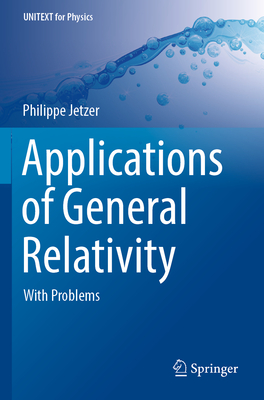
Applications of General Relativity: With Problems (Unitext for Physics)
Description
The aim of this textbook is to present in a comprehensive way several advanced topics of general relativity, including gravitational waves, tests of general relativity, time delay, spinors in curved spacetime, Hawking radiation, and geodetic precession to mention a few. These are all important topics in today's research activities from both a theoretical and experimental point of view.
This textbook is designed for advanced undergraduate and graduate students to strengthen the knowledge acquired during the core courses on General Relativity. The author developed the book from a series of yearly lectures with the intention of offering a gentle introduction to the field. This book helps understanding the more specialized literature and can be used as a first reading to get quickly into the field when starting research. Chapter-end exercises complete the learning material to master key concepts.



